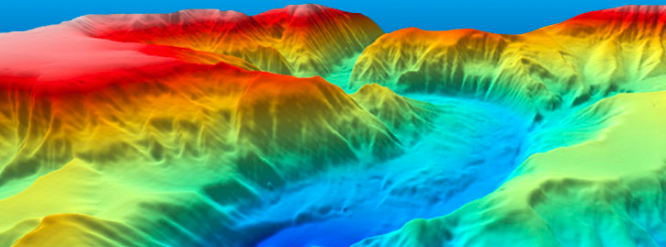
By Alexandra Patel and Monica Medina
The Nippon Foundation-GEBCO Seabed 2030 Project has made the mapping of the entire ocean floor by 2030 its global mission. Since 2017, coverage of the world’s ocean floor has increased from 6 to 15 percent – equivalent to an additional 32,000,000 square kilometers, an area greater than the landmass of the entire African continent.
Why This Matters: Despite assurances by the International Seabed Authority that regulations will be finalized by 2020, many rightly fear that this is moving too fast. “We’re just blindly going into the dark, adjusting any impacts on the way… We have no assurances, no evidence that they can avoid serious harm” states Kristina Gjerde, a high seas policy specialist. With the modernized mapping of the ocean bed, high- quality environmental assessments can be accurately made and used to assess the full range, extent, and duration of environmental damage from deep-sea mining operations. Having an accurate baseline of current conditions before mining begins is key to knowing what the impacts are once seabed mining inevitably begins.
Humans on the Sea Floor: Due to the growing production of high-tech applications, like the iPhone and clean energy sources, the demand for rare and specialty metals are continuing to rise. Mineral deposits on land are beginning to dwindle, and thus states and corporations are increasingly turning towards deep sea mining as a process of mineral extraction. This type of mineral retrieval takes place on the ocean floor, usually near active or extinct hydrothermal vents. Deep sea mining, however, is a highly disruptive process that typically results in the destruction of ocean bed ecosystems and habitats.
The Nippon Foundation-GEBCO Seabed 2030 Project: The goal of the initiative is to facilitate a better understanding of fundamental ocean processes including circulation, habitats, weather systems, tides, sediment transport, tsunami wave propagation, and climate change. Complete topography of the ocean floor will help identify and prevent underwater hazards, as well as aid in informing sustainable marine resource management and infrastructure development.
Seabed Mining Permits Going Forward: The International Seabed Authority (ISA), a UN body made up of 168 countries but most notably NOT the U.S., is supposed to protect biodiversity from deep-sea mining activities — it has already issued 29 licenses to governments and companies, authorizing them to explore in international waters.
- For example, a Switzerland-based company, Allseas Group, provided the majority of the financing Canada’s DeepGreen Metals, a start-up planning to extract cobalt and other battery metals from small rocks covering the seafloor. Allseas invested the bulk of the $150 million that DeepGreen needs to carry out its first feasibility studies.
- According to DeepGreen, “seafloor polymetallic nodules contain more than enough base metals that the world needs to get to a clean energy economy, and they require no blasting, drilling or digging. Indeed, our life cycle sustainability analysis shows that, with regards to NMC batteries with copper connectors for electric vehicles, ocean nodules generate at least 75% less CO2 when compared to producing these metals from land ores.”


